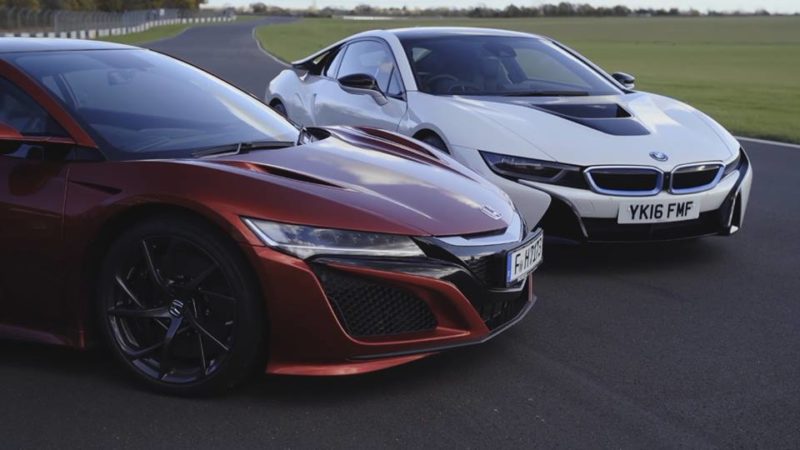NSX and i8 Show Speed and Economy Form the Newest Breed of Hybrid Supercars

As enthusiasts, we have to face one simple fact: hybrid technology is amazing. We wouldn’t have thought this even five years ago, with the impressively-boring Prius filling up our streets with its armadillo silhouette. However, this technology, once viewed by many as a protector of the climate, is also a protector of speed and performance. It is a tool, if you will, with multiple uses.
The cars seen here are highlighting that very premise. Hybrid technology in these cars is used to enhance the experience for those who enjoy raising their heart’s BPM. In the BMW i8, it is more of an exercise of speed through efficiency, where as the Honda NSX is speed through added power.
With half the cylinder count of the Honda, BMW’s i8 lends a greater margin of performance to the electric motors. You can drive in all-electric mode, but for the claimed 0-60 time of 4.2 seconds, you’ll want to have the three-cylinder turbo motor turned on. Altogether, you’ll have 357 horsepower and a V8 muscle-car rivaling 420 lb/ft of torque. Materials and air are also a main focus of the BMW, with its light weight being a primary factor. In addition to being light, the body is sculpted to punch the smallest hole in the air as possible.
Honda’s approach to speed is a steep contrast. A 3.5-liter V6 sits in the middle (in the same spot as the BMW) but with a big increase in displacement over the German, as well as more cylinders. And turbochargers. And power. 573-combined horsepower is sent to all four wheels, and that sets the ethos for the rest of the car. With years of waiting for a release, the NSX had to deliver, and it does. Every aspect of the car was designed for speed. The electric motors are used to make up for turbo lag, as well as putting a stop to under-steer. It may be a hybrid by name, but a Prius it is not.
